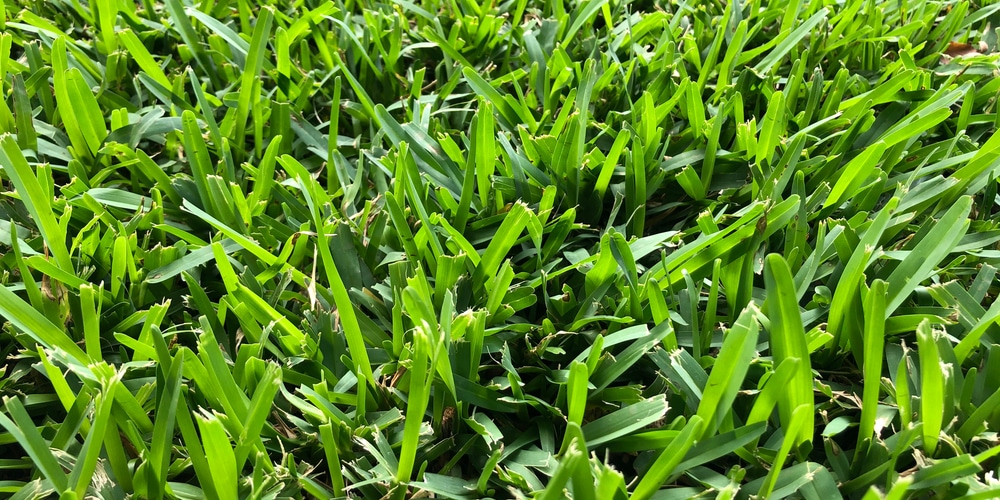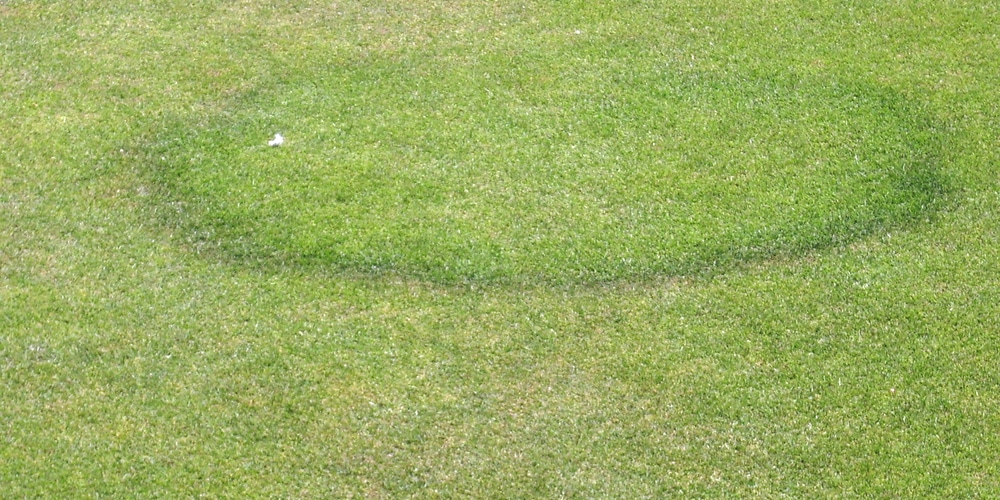A few different fungus varieties affect St. Augustine grass and create dark green patches. While many fungal infections will cause your grass to turn brown, there are a few types that create green patches in the early stages. Fairy rings, Pythium blight disease, and take-all root rot disease commonly create dark green patches in St. Augustine grass.
If you’ve recently noticed dark green patches in your St. Augustine grass, read on. This article will help you determine the cause so that you can treat your grass to stop the disease from spreading and killing your lawn.
Why Dark Green Patches Appear in St Augustine Grass
Fairy rings, Pythium blight disease, and take-all root rot disease are all caused by fungal infections. These diseases can affect St. Augustine lawns and create dark green patches in affected grass.
Let’s look at each fungal disease in turn and discuss how to treat your lawn.
Fairy Rings
Fairy rings are fairly common in St. Augustine grass. They are recognizable due to their areas of dead, brown grass, and darker green grass. In the early stages, you may notice that your grass has patches of dark green before the grass starts to die and turn brown. You’ll likely also see mushrooms growing nearby, sometimes in rings depending on the stage of the fungus development.
A fungus called basidiomycetes creates fairy rings in St. Augustine grass. This fungal disease will damage your turf by depleting the nutrients needed by the grass. It will also release a toxic by-product that changes the grass’s color and eventually kills the grass.
It can be challenging to eliminate fairy ring fungus from your yard. The best thing to do is cut out infected areas of turf and then lay new sod or reseed the area. This option is more environmentally friendly than using chemical-based fungicides. If you do decide to use a fungicide, you could use flutolanil or Conan 20. Products that have been manufactured using both these ingredients work best.
Here’s more on fairy rings from the Missouri Botanical Garden.
Pythium Blight Disease
Pythium Blight disease is caused by a fungus that will change the color of your grass. In the early stages, the grass will turn a gray-green color in affected areas. The grass will also look wilted. As the disease develops, you’ll start to see brown areas forming in your yard. You’ll also notice bronze-colored blades of grass.
Pythium blight disease is caused by a fungus called pythium; the condition is also commonly referred to as grease spot disease. Spores from the fungus can be spread across your yard on the wind or via runoff water.
Pythium blight can be treated using a fungicide such as Azoxystrobin or myclobutanil. The fungus can be challenging to get rid of as it can develop resistance to some anti-fungus treatments.
Take-all Root Rot Disease
Take-all root rot disease causes patches of your grass to become a lighter green to yellow color rather than dark green. Once the disease has progressed, you’ll see black-colored grass, and your grasses roots will have started to rot. This disease is caused by a fungus that likes alkaline soils and will eventually kill your grass. It commonly develops if your lawn has thatch made up of organic matter.
To get rid of take-all root rot disease, you can change your soil’s pH range so that it’s more acidic. This can be achieved by applying ammonium sulfate to your lawn annually. You can also use a fungicide such as myclobutanil to get rid of the fungus.
Conclusion
A few different fungal diseases can cause dark green patches in St. Augustine grass, including Fairy ring, take-all root rot, and Pythium blight disease. These conditions can be treated by applying fungicides.
After applying the fungicide, your lawn should return to a healthy, green condition. To stop fungal infections from reappearing, you can practice the correct irrigation methods. Don’t water your grass at night, as this is more likely to cause fungi growth. Mowing your lawn regularly and aerating can also help keep your lawn healthy. Caring for your lawn well will help keep it stronger so that it’s more resistant to disease and drought.
If you have dark green spot related to weeds here’s some effective weed killers for St. Augustine.
If you want to replace the affected St. Augustine grass, here’s how to use plugs to patch it.

